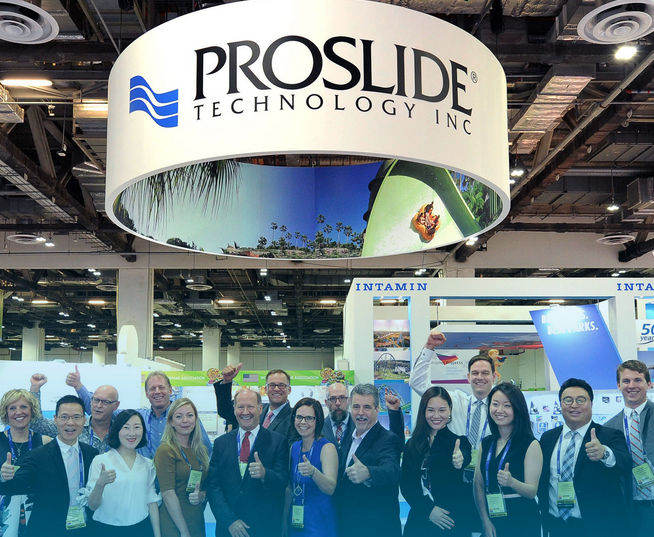“Hi, Chris,” said the caller. “My company wants to expand our markets into Asia. I’m not sure where to start, but an industry friend of mine suggested I call you. Can you help?”
At Idea International, we get calls like this almost daily. A friend reminded me of the REM song, “You Can’t Get There from Here (I’ve Been There),”—and in a way, that sums up the experience of an exhibit program in Asia.
First Step
Where do you start? Depending on your exhibiting goals, objectives, and industry, determine what shows serve your target market. Shows in Asia fill up early, sometimes as early as two years in advance. For example, major healthcare shows that rotate from country to country start booking space at the prior show. Last-minute bookings aren’t as prevalent in the APAC region as they are, say, in the US.
After that, you’ll need a guide, someone who can honestly say, “I’ve Been There.”
Asia Isn’t North America
Unlike exhibiting in the US, you are planning to exhibit not in states but in countries, many countries, each with its own culture, labor practices, restrictions, and unwritten rules about exhibiting. Each country has unique cities—some with state-of-the-art exhibition facilities in the urban center. Then, there are smaller venues on islands that are not as accessible. For the most part, exhibitions are welcome because exhibition visitors increase local revenue and generate positive press.
Although English is usually spoken, savvy exhibitors have some instructions written in the local language to facilitate everything from getting to their hotels to ordering in restaurants.
And remember: each Asian country has its own unique language—or perhaps more than one. And the metric system is the norm.
Yes, You Need a Partner to Take You There
At this point, you want a partner familiar with the country where the exhibition will take place, a partner who works there regularly. There are too many moving parts and pieces to look at your program as a DIY project. Get references and talk to potential partners before you make a choice; with the prevalence of Zoom, it’s easy to meet face-to-face. Our advice? Pick a partner who not only knows what they’re doing but that you trust.
Once you have a preferred partner, develop a timeline. Initially, after the pandemic subsided, timelines were shorter than previously. But as the rhythm of rotational and annual shows returns, longer timelines are preferable across the board for exhibitors, organizers, and attendees.
Who’s the Organizer?
Your partner will explain the organizer’s role at the show you are targeting. Sometimes, the organizer is similar to the general contractor in the US, but not always. That’s one more thing that changes from show to show, from organizer to organizer.
You will need to learn what’s allowed at your show in the venue where the show will be held. Learn what permits you’ll need, what materials are allowed, whether you can have a hanging sign, and what regulations need to be observed in the country and city where the show will take place. (PS: Study the regulatory environment for medical shows.)
In some cases, the organizer takes responsibility for hotel reservations. Discuss with your partner if you should use the organizer or try to book rooms on your own. This isn’t the same as ‘room blocks’ in the US. Above all, you want to be assured that your team has a place to stay.
If you plan to have hospitality in your exhibit, culture dictates what you’re serving. While alcohol is served in some countries, other cultures limit beverage service to coffee, tea, and water. In some countries, eating in front of others is considered bad manners, while in other countries, visitors expect food. Oh, and by the way, more and more frequently, the venue is in charge of catering. Bringing in your own people is getting to be more and more difficult.
Build it There!
Remember, anything that can be built in your home country can be built in the APAC region perhaps with a few local modifications that make everything more relevant. Remember this because you want to ship as few things as possible. Your exhibit properties can be built on site, and the best partners will see that the presentation of your brand is consistent across continents with the same PMS colors, logo, and tagline treatments everywhere you exhibit. One of the key factors in expanding your markets is global recognition—and the right partner will make sure that happens for you. Nothing is more frustrating to global exhibitors than to learn that shipments are held up in customs, or that freight forwarders didn’t estimate the timeline correctly.
What Else Do You Need?
Your partner is also your best advisor about the government documents and visas you and your team need, depending on the country. This is another reason to develop a very actionable timeline.
Your partner will help you plan your budget and plan expectations. In addition to the costs associated with exhibiting, you will need to estimate travel costs for your team. You might want to budget for an interpreter if the show attracts a global audience. Ask your partner about other charges, such as recycling, so that you are not hit with unexpected costs.
A final recommended budget item is a site visit. The best surprise is no surprise, and it will give you a feeling of confidence when you arrive for the actual show to know firsthand about the venue and the city.
www.idea-intl.com






